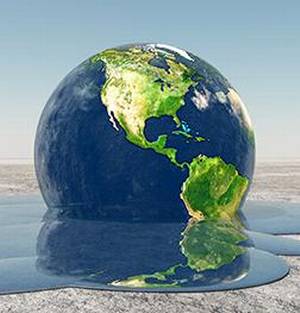A book on geological history that explains climate change
It is climate season again as the UN Climate Change Conference (CoP23) considers a greener future for the planet in Bonn, Germany. There is plenty of literature on the topic, but it is always useful to get it organised between the covers of a book. Australian climate scientist and conservationist Tim Flannery, inThe Weather Makers(2005), provides a researched and cogent explanation of carbon dioxide’s role in keeping the globe warm and preventing it from deep freezing. A lot more has happened over the past decade, of course, in terms of scientific reports published on the impact of man-made greenhouse gas emissions on ecosystems, led by scientists of the Intergovernmental Panel on Climate Change. Prof. Flannery’s book provides a foundational understanding of all the connected phenomena.
To understand concerns over Earth’s future, it is useful to delve into geological history. We learn, in an accessible explanation given by Prof. Flannery, of the explanation by astrophysicist Milutin Milankovitch in the 20th century, of three principal cycles that are responsible for Earth’s climatic variability — its orbit, axis and a wobble on its axis — all taking place at intervals, variously, of about 100,000 years and 22,000 years. To this we must add human interventions in the latest warm phase over the past 8,000 years that culminated in atmospheric carbon dioxide of 280 parts per million (ppm) just before the Industrial Revolution. Since then, the levels have risen steadily due to man-made emissions, touching 403.3 ppm last year.
Just how long can humanity hope to maintain a liveable climate in the present warm phase?The Weather Makersprovides insights into how civilisations responded to adverse events, such as a rise in rainfall in Mesopotamia after a slight shift of Earth’s orbit between 10000 and 4000 BC, and a further reversal in 2800 BC that drove people to other parts where managed irrigation developed as a response. The book cuts across geological time in about 330 pages. It was written when the world was struggling to get the major nations to take the Kyoto Protocol seriously. The international community has advanced since, and has the Paris Agreement as a template on the one hand and the rise of low-cost green technologies on the other. It is encouraging that a young generation now wants to go green and shun fossil fuels. When Prof. Flannery wrote the book, industry and business mostly campaigned against the science, but today, they are ready to embrace it.
source:-the hindu





